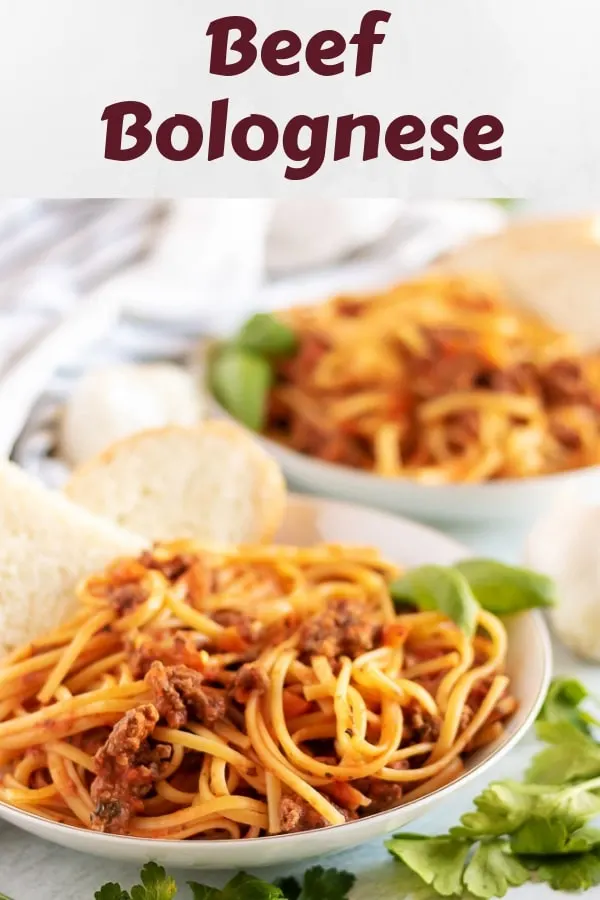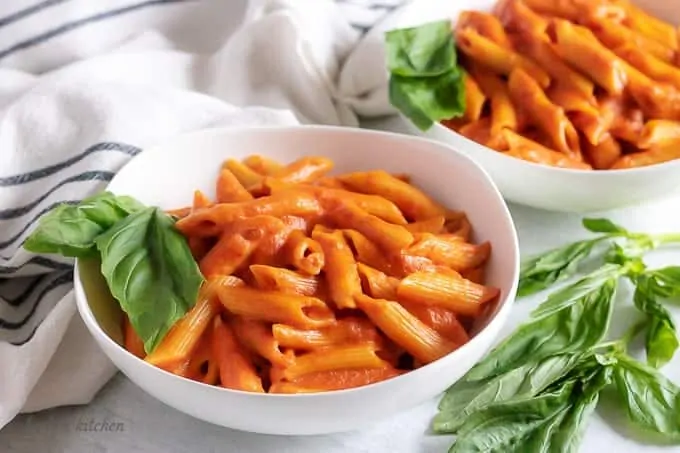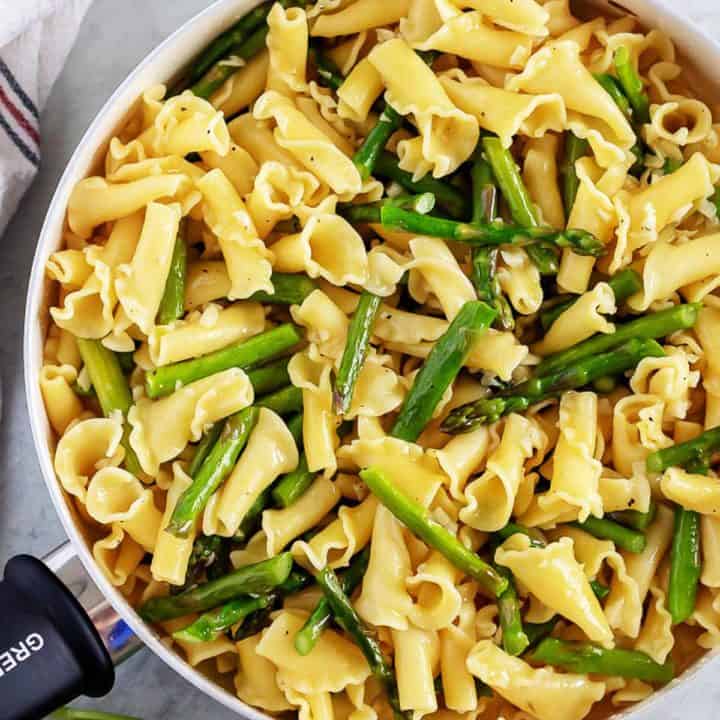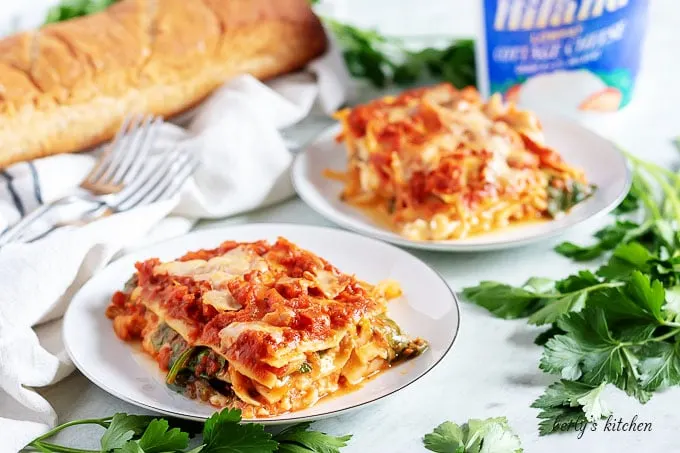Beef Bolognese
A hearty, rich beef bolognese tossed with linguine. Nothing beats a homemade pasta sauce made in your own kitchen and our recipe is sure to satisfy!
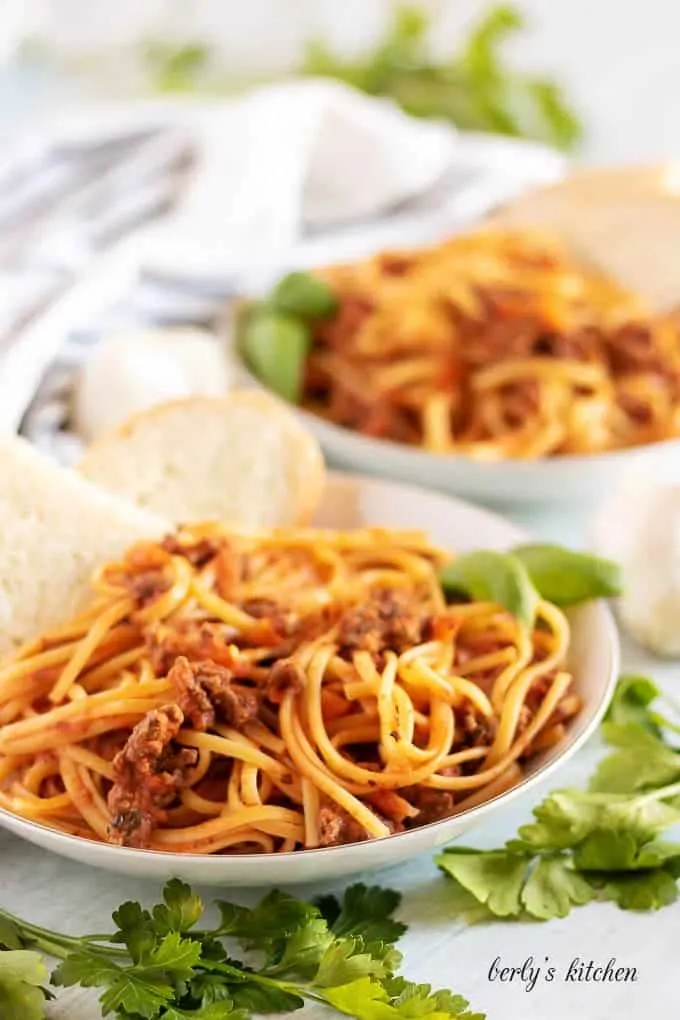
I can’t tell you how excited I am to share Kim’s recipe! She worked hard on our beef bolognese and I can tell you it was super tasty.
But, before we get to the recipe, I want to talk about something near and dear to me. Let’s take a moment to talk about, “authenticity,” in cooking.
Specifically, here in the States. Man, people get so worked up over what’s authentic.
“That’s not authentic. My grandma made it this way, etc.” Well, I have a news flash for you.
Unless you’re super wealthy and can afford to import all of your cooking ingredients and utensils, then I’m pretty sure most of what you make isn’t authentic.
Here’s why, in the U.S. we have food processing guidelines that differ from Canada’s, Mexico’s, or even Italy’s guidelines.
Point is, it’s almost impossible to create an authentic meal when you don’t have access to the original ingredients and items used in making the dish.
Take for example, my homemade pasta sauces, which when cooked, have more orange hues, than red. Why is that?
I use local tomatoes, garlic, and onions. Tomatoes, that are local to me, when heated and reduced, end up looking orange.
Not the normal, bright red color associated with most Americanized pasta sauces. So, while I strive to use natural, “authentic,” ingredients, the end result is still slightly different.
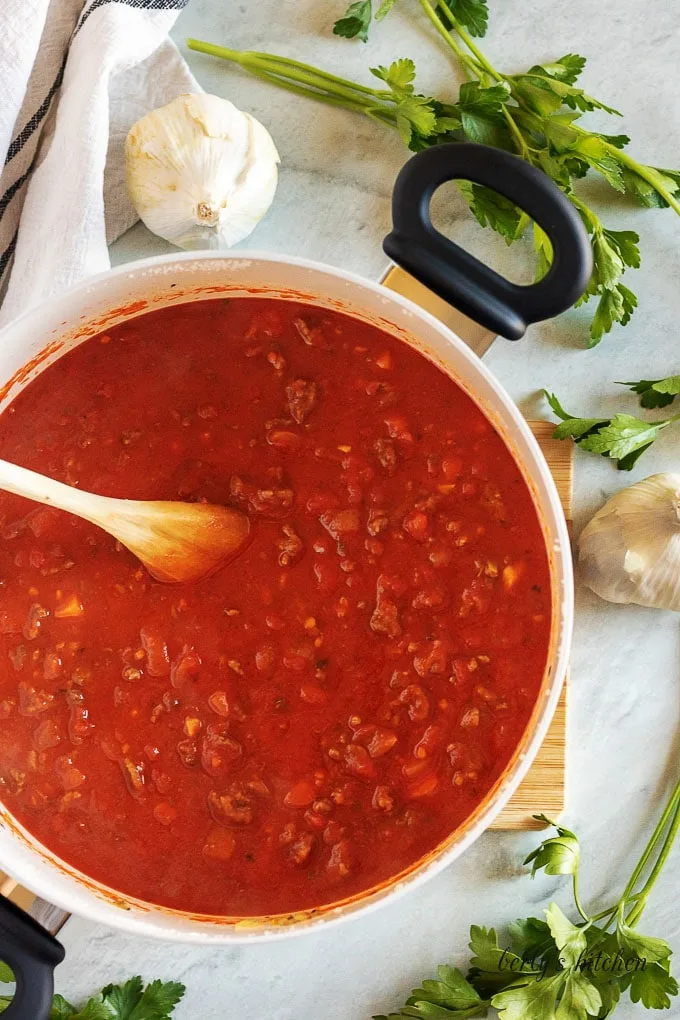
Moreover, it will never be considered authentic to person who lives in, let’s say, Rome.
For our final example, I’ll tell you about Hungarian bean soup. If you’ve never had it, then you’re in for a treat.
I grew up eating it. Pinto beans, slow cooked with kielbasa sausage, and sauerkraut. As authentic as it gets.
That’s right…pinto beans (Peruvian), sauerkraut (Austrian, German, etc.), and kielbasa sausage (Polish, Ukrainian) an authentic, traditional Hungarian soup…?
Did you catch the sarcasm there? Truth is, until I grew up, I had no reason to think otherwise.
See how silly that sounds? So, when you prepare a meal and someone, “pops,” off about it being unauthentic, just laugh.
Because, truth is, at least here in the States, being truly authentic is a rarity. I’ve found, most of the time, the people making those statements are simply bitter, distasteful human beings.
Is it any coincidence their cooking skills follow suit? It seems almost funny that they’re only capable of preparing bitter, tasteless food.
What they fail to see is that it’s not the tomatoes your grandma used that made the dish, “authentic.” It was the passion she put into the dish.
Love was the most important, “real,” ingredient she used. Something we should all think about before being so critical.
Uh oh, it seems I went a little off track today. Now worries, I still added the tips below and Kim, as always, has provided detailed instructions and photos to help you through the process.
We hope you enjoy this beef bolognese, even if it isn’t authentic. 🙂
Beef Bolognese Tips:
Tips
- I know it may seem strange to add the garlic just before tossing in the liquid ingredients. But, if you put it in at the beginning it may stick and burn. When garlic burns, it becomes bitter and that can ruin your sauce. It’s always better to under cook it than to overcook it.
- If you’re good with multi-tasking, then feel free to boil your pasta while the sauce simmers. Doing so, will result in a faster cook time overall. Basically, you can go from stove to table in less than an hour.
- In case you were wondering, “Which wine should I pair with beef bolognese?” For our recipe, I recommend either a red or a blush. Since this is a beef dish, a red wine would be the obvious choice. However, some people, like myself, find reds to be overly dry.
- With the addition of heavy cream to the pasta sauce, you can get away with serving a blush.
Like This Recipe?
We’d love it if you would leave a 5 Star ⭐️⭐️⭐️⭐️⭐️ rating below.
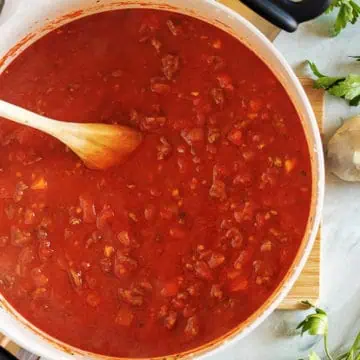
Ingredients
- 1 tablespoon olive oil
- 1 pound ground beef, We used 93/7.
- ½ cup white onion, diced
- ¼ cup celery, finely chopped
- ¼ cup carrots, finely chopped
- 1 tablespoon dried oregano
- ¼ teaspoon ground nutmeg
- ¼ teaspoon red pepper flakes
- 4 garlic cloves
- Salt and pepper
- 1 cup low-sodium beef broth, or red wine
- 28 ounces crushed tomatoes
- 2 tablespoons tomato paste
- ¼ cup heavy cream
- ¼ cup fresh basil
Instructions
- Heat a large stockpot over low-medium heat. Add olive oil, onions, carrots, celery, and ground beef.1 tablespoon olive oil1 pound ground beef½ cup white onion¼ cup carrots¼ cup celery
- Use a wooden spoon or spatula to break up the beef. Add the oregano, nutmeg, red pepper flakes, salt, and pepper. Just before the beef browns completely, add the garlic.1 tablespoon dried oregano¼ teaspoon ground nutmeg4 garlic clovesSalt and pepper¼ teaspoon red pepper flakes
- Continue to cook until the vegetables soften and beef is browned.
- After the beef is cooked through (drain the grease if desired), pour in the beef broth or wine. Use the wooden spoon to scrape any bits off the bottom of the pan.1 cup low-sodium beef broth
- Add the crushed tomatoes and tomato paste. Stir to combine. Cover and let simmer for 10 minutes.28 ounces crushed tomatoes2 tablespoons tomato paste
- After 10 minutes, remove the lid and add the basil and heavy cream. Stir to combine, and cook an additional 10-15 minutes.¼ cup heavy cream¼ cup fresh basil
- Serve over linguine, fettuccine, spaghetti, or other long pasta. Top with freshly grated Parmesan cheese if desired.

